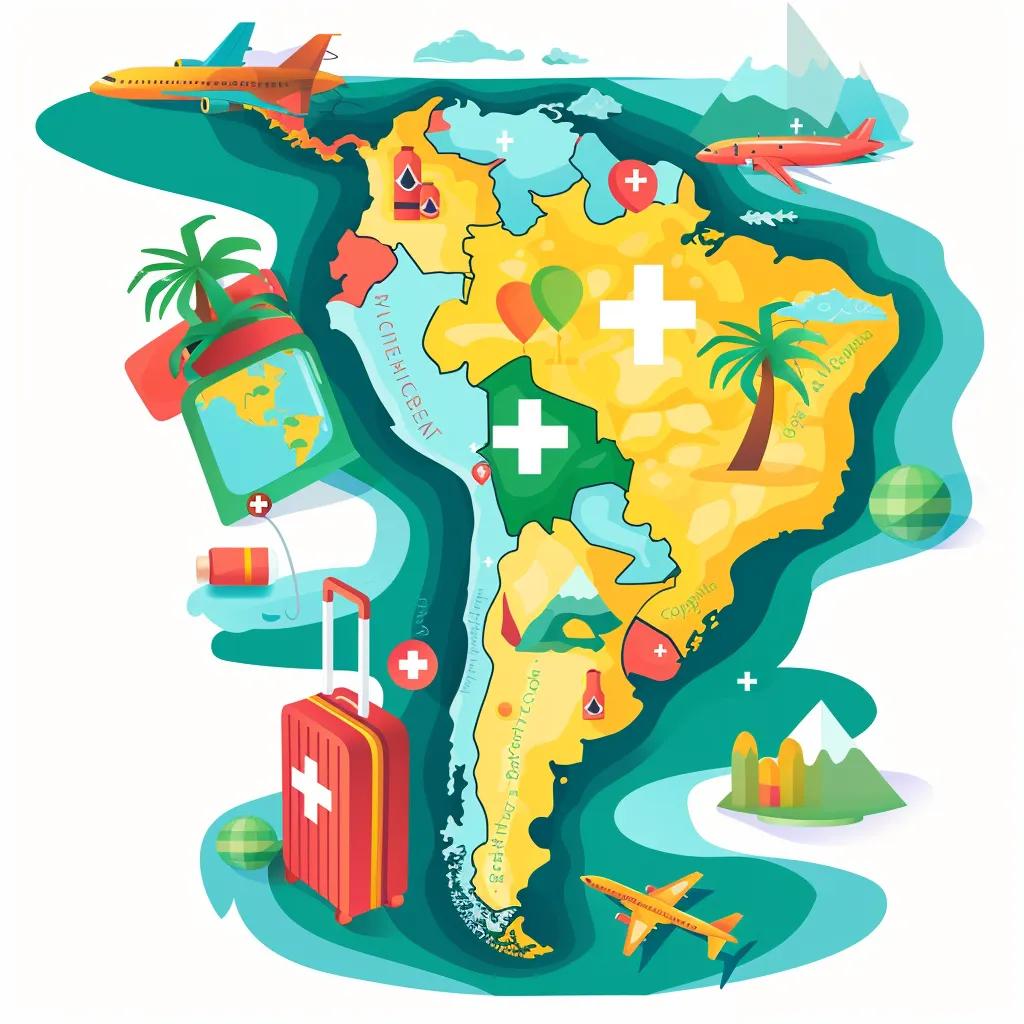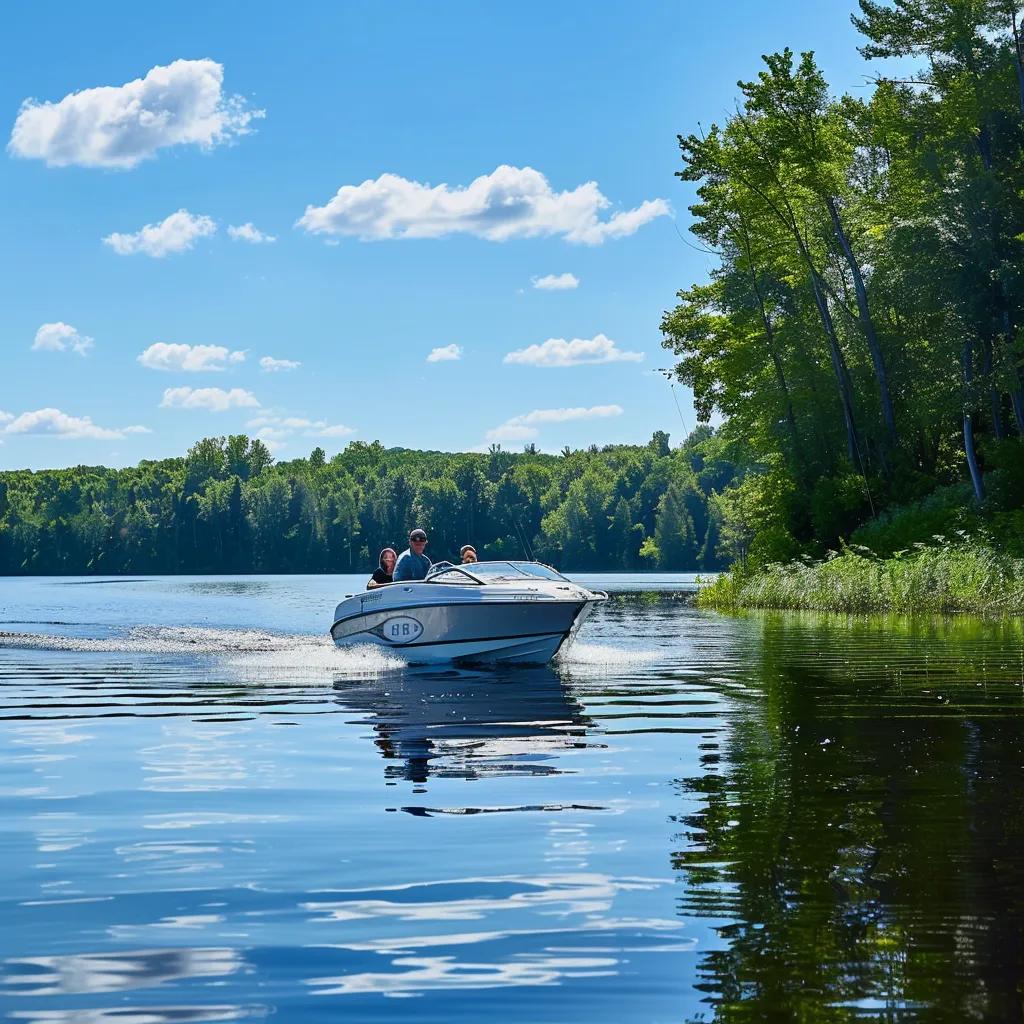Ensure your Brazil tours are safe with travel medical insurance. Protect yourself from unexpected costs and enjoy peace of mind on your adventures.
Travel Insurance Insights: Is It Necessary in South America?

Do You Need Travel Insurance to Travel to South America?

Travel insurance for South America delivers crucial financial protection and medical peace of mind on a continent where healthcare costs, adventure activities, and entry requirements vary widely. Whether you’re trekking the Inca Trail, exploring the Amazon basin, or backpacking through the Andes, securing adequate coverage addresses risks like emergency evacuation, trip interruption, and lost luggage. This guide maps out mandatory rules by country, essential policy types, cost factors, selection criteria, region-specific mandates, extended-trip benefits, and answers common traveler concerns—ensuring you can explore with confidence.
Is Travel Insurance Mandatory for Traveling to South America?
No, South America does not enforce a single continent-wide mandate for travel insurance, but several nations require proof of coverage as a condition of entry. Mandatory policies typically cover medical treatment and repatriation, safeguarding both visitors and local health systems. Understanding which countries demand insurance helps you comply with visa regulations and avoid entry refusals.
Which South American Countries Require Travel Insurance?

| Country | Requirement | Details |
|---|---|---|
| Ecuador | Mandatory for Galápagos entry | Insurance must cover medical and repatriation for all Galápagos visitors |
| Argentina | Mandatory COVID-19 coverage | Policy must include COVID-19 treatment up to specified limits |
| Bolivia | Medical insurance requirement | Coverage for emergency hospitalization and medical evacuation |
Mandatory Travel Insurance Requirements
Several South American countries mandate travel insurance for entry, with specific requirements varying by nation. For example, Ecuador requires insurance for the Galápagos Islands, while Argentina mandates COVID-19 coverage, and Bolivia requires medical insurance for emergency situations [1]. These requirements ensure visitors have access to necessary medical care and repatriation services.
Next, even when not compulsory, understanding the protective benefits remains vital.
Why Is Travel Insurance Recommended Even When Not Mandatory?
Travel insurance enhances safety and reduces out-of-pocket risk by covering emergency medical expenses, trip cancellations, and lost baggage [2].
- Emergency Medical Protection Travel medical insurance handles hospital bills, ambulance transport, and repatriation, preventing sudden high costs abroad.
- Trip Cancellation & Interruption Coverage reimburses prepaid expenses if unforeseen events—illness, natural disasters, or strikes—force you to cancel or cut short your itinerary.
- Baggage & Personal Effect Safeguards Lost, stolen, or damaged luggage protection compensates you for replacing essential items, reducing travel stress.
Even in countries without mandates, these benefits deliver financial security and planning peace of mind, leading directly to policy type considerations.
How Do COVID-19 Requirements Affect Travel Insurance in South America?
- Mandatory COVID-19 treatment coverage remains in places like Argentina and Bolivia.
- Some airlines and tour operators require proof of COVID-19 medical protection before boarding or confirming reservations.
- Comprehensive policies now include testing costs, quarantine accommodation, and medical evacuation if facilities are overwhelmed.
Adapting your policy to include pandemic-related benefits ensures you meet entry rules and avoid coverage gaps as conditions evolve.
What Types of Travel Insurance Coverage Are Essential for South America?
Travel insurance for South America spans several core coverage categories that address distinct risks on the continent. Defining each type, explaining its function, and highlighting specific benefits helps you assemble a policy that fits your itinerary and activities.
| Coverage Type | Mechanism | Primary Benefit |
|---|---|---|
| Medical & Evacuation | Covers hospitalization, repatriation | Prevents large medical debt abroad |
| Trip Cancellation & Delay | Reimburses prepaid trip costs | Secures prepaid flights and tours |
| Baggage & Personal Belongings | Compensates lost or stolen items | Replaces essentials quickly |
| Adventure Sports Add-On | Extends coverage to high-risk activities | Enables safe participation in trekking or rafting |
Choosing the right mix ensures you’re protected from common hazards and high-cost scenarios prevalent in South America’s diverse environments.
What Does Medical Travel Insurance Cover in South America?
Medical travel coverage delivers reimbursement for emergency treatment, repatriation, and often limited support for pre-existing conditions when properly disclosed. It covers hospital stays, doctor visits, prescription drugs, and air ambulance services. For example, a fractured wrist in Peru or severe malaria in the Amazon can exceed thousands in local currency—policies cap these expenses, avoiding financial ruin. This foundational coverage paves the way to consider trip-related protections.
Medical Travel Insurance: Evacuation, Injuries, and Medications
Medical travel insurance is a cornerstone of protection for any South American adventure, offering comprehensive support for unexpected health events. This coverage is designed to alleviate the financial burden and logistical stress associated with medical emergencies abroad.
- Emergency Medical Evacuation: Should you suffer a serious illness or injury that requires specialized care not available locally, your policy can cover the cost of emergency medical evacuation. This might involve transport by ambulance to a more equipped hospital within the country or, in severe cases, repatriation via air ambulance back to your home country. The costs for such evacuations can be substantial, often running into tens of thousands of dollars, making this a critical benefit.
- Injury Treatment: Whether it’s a sprained ankle from a trek in Patagonia or a more serious injury sustained during an adventure sport, medical travel insurance covers the necessary medical treatment. This includes doctor’s consultations, hospital stays, surgical procedures, and physical therapy, ensuring you receive prompt and appropriate care without worrying about exorbitant medical bills.
- Medication Coverage: If you require prescription medication due to a covered illness or injury that occurs during your trip, your travel insurance policy can help cover the costs. This is particularly important if the medication is not readily available or is significantly more expensive in your destination country. The policy will typically cover the cost of prescribed drugs needed to treat the condition that led to the claim.
It’s essential to review your policy details to understand the specific limits and conditions for these benefits, ensuring you have adequate coverage for your planned activities and destinations.
How Does Trip Cancellation and Interruption Insurance Protect You?
Trip cancellation and interruption insurance protects prepaid travel investments if emergencies arise before or during your trip. Covered scenarios include personal illness, natural disasters, travel advisories, or an immediate family member’s death. Reimbursement typically covers flights, hotels, and tour fees lost to unforeseen cancellations or cut-short journeys. Understanding exclusion clauses—like changes of mind or pre-existing condition waivers—ensures you select a plan aligned with your risk profile.
What Coverage Is Available for Lost, Stolen, or Damaged Luggage?
Baggage protection reimburses the cost of replacing essential items when your checked or carry-on luggage is lost, stolen, or damaged. Policies often include limits per item and overall maximums—for instance, a $500 cap on electronics and $1,000 aggregate for personal effects. Preventive tips like tagging valuables, photographing contents, and using TSA-approved locks reduce claims complications and support faster settlements.
Do You Need Adventure Sports Insurance for Activities in South America?

Yes, adding adventure sports coverage is crucial for high-risk activities like high-altitude trekking, whitewater rafting, zip-lining, and paragliding. Standard travel insurance often excludes injuries from these pursuits; a specialized add-on extends medical, evacuation, and accidental death benefits to cover mountaineering above 4,000 m, canopy tours in Costa Rica’s jungles, or river expeditions in Bolivia. Confirm activity lists and altitude limits to avoid surprise exclusions.
How Much Does Travel Insurance for South America Cost?
Travel insurance premiums for South America vary based on traveler profile, trip specifics, and coverage options. Defining cost drivers and comparison strategies helps you secure affordable, comprehensive protection.
| Factor | Impact on Premium | Example |
|---|---|---|
| Age | Older travelers pay higher rates | A 60-year-old may see 30% premium increase over a 30-year-old |
| Trip Duration | Longer trips incur greater costs | A 30-day trip costs more than a 7-day trip |
| Destination Activities | High-risk sports add charges | Rafting or climbing add 10–15% to base premium |
| Pre-existing Medical Conditions | Requires medical screening fees | Declared conditions may double premiums |
What Factors Affect Travel Insurance Premiums for South America?
Travel insurance costs hinge on age, trip length, destination, and risk profile. Older travelers, longer stays, and adventure sports elevate premiums due to increased claims likelihood. Declaring pre-existing conditions and opting for higher coverage limits also impact pricing. Balancing deductible levels against coverage caps reduces premiums while preserving adequate protection.
How Can You Find Affordable Travel Insurance for South America?
Compare multiple providers with side-by-side quotes using criteria like coverage limits, deductibles, and policy exclusions. Look for multi-trip or annual plans if you plan several visits, which can lower per-trip costs. Utilize online aggregators and independent broker platforms to identify discounts, promotional offers, or group rates. Evaluating customer reviews ensures reliable claims handling without sacrificing affordability.
How Do You Choose the Best Travel Insurance Policy for South America?
What Should You Look for When Comparing Travel Insurance Policies?
- Coverage Limits and Sub-Limits Ensure medical, evacuation, cancellation, and baggage limits meet potential worst-case costs.
- Exclusion Clauses Review restrictions on high-risk sports, pre-existing conditions, or civil unrest.
- Emergency Assistance Services Confirm 24/7 multilingual assistance, local provider networks, and repatriation logistics.
- Deductible Options Higher deductibles reduce premiums but increase out-of-pocket costs for minor claims.
Focusing on these factors builds a robust safety net tailored to your South America travels.
Which Travel Insurance Providers Offer the Best Coverage for South America?
| Provider | Key Feature | Why It Matters |
|---|---|---|
| ExplorerShield | Comprehensive adventure add-on | Covers high-altitude trekking and rafting |
| Global Travels | COVID-19 & quarantine coverage | Meets evolving pandemic entry requirements |
| BudgetSecure | Multi-trip annual plans | Cost-efficient for frequent travelers |
These providers combine broad protection, competitive pricing, and strong customer support to serve diverse traveler needs.
What Are Common Exclusions to Watch Out for in Travel Insurance?
Common exclusions include undisclosed pre-existing conditions, injuries from extreme sports without add-ons, alcohol or drug-related incidents, and voluntary non-medical evacuations. Identifying these gaps prevents surprise denials and ensures you purchase necessary extensions before departure.
What Are the Country-Specific Travel Insurance Requirements in South America?
Country-level mandates and healthcare systems differ greatly across South America. Tailoring your policy to each destination’s regulations and medical landscape ensures compliance and service quality when you need it most.
What Are the Travel Insurance Rules for Argentina?
Argentina requires travel insurance that covers COVID-19 treatment and repatriation. Public hospitals offer free basic care to tourists but often face long wait times. Private clinics deliver faster, quality services at higher costs—insurance ensures prompt access.
What Should Travelers Know About Travel Insurance in Brazil?
Brazil does not mandate travel insurance nationally, but private healthcare costs can exceed $1,000 per day. Adventure tourism hotspots in Chapada Diamantina or Pantanal often require proof of evacuation cover before guided excursions, making medical and evacuation options essential.
How Does Travel Insurance Work for Peru and the Inca Trail?
Peru recommends medical evacuation coverage given remote high-altitude trekking routes like the Inca Trail. Emergency oxygen, helicopter transport, and altitude sickness treatment pillars protect hikers from sudden health threats above 4,000 m.
What Are the Insurance Requirements for Ecuador and the Galapagos Islands?
Visitors to the Galápagos must present valid travel insurance covering medical treatment and repatriation up to at least $30,000. This requirement preserves fragile ecosystems by ensuring tourists can access mainland care without burdening local facilities.
What Are the Travel Insurance Considerations for Colombia?
Colombia’s expanding tourism relies on quality private hospitals in Bogotá and Medellín. While not mandatory, policies with road accident coverage and evacuation benefits address safety risks on mountain roads and rural bus routes.
How Does Travel Insurance Cover Adventure Sports in Chile?
Chile’s adventure tourism—mountain biking in Patagonia, volcano ascents—necessitates add-ons for high-risk sports. Policies must specify altitude limits, equipment damage, and search-and-rescue services for remote excursions.
What Are the Benefits of Travel Insurance for Long-Stay and Backpacker Trips in South America?
Extended visits and backpacking tours introduce unique needs such as multi-country coverage, renewal flexibility, and tailored benefits for unpredictable itineraries.
How Does Backpacker Travel Insurance Differ from Standard Policies?
Backpacker travel insurance offers longer coverage durations (up to 12 months), flexible home-return options, and multi-nation protection across South America. Benefits often include bicycle theft cover, public transport delay reimbursement, and coverage for work-away programs.
What Should Long-Term Travelers Know About Policy Extensions and Coverage Limits?
Long-stay travelers must track maximum policy durations and renewal windows to avoid coverage lapses. Renewals may require medical questionnaires, while extended limits on electronics, golf equipment, or volunteer work coverage ensure complete protection throughout an open-ended journey.
What Are the Most Frequently Asked Questions About Travel Insurance for South America?
Many travelers seek clarity on core concerns about medical coverage, policy costs, and entry requirements. Below are concise explanations for common queries.
Do I Need Travel Insurance for Backpacking in South America?
Backpacking routes across multiple countries introduce varied healthcare access and adventure risks that standard insurance may exclude. Securing a backpacker-specific policy provides extended trip durations, multi-country protection, and coverage for common backpacker activities like bus travel and homestays.
What Does Travel Insurance Cover in South America?
Comprehensive plans include emergency medical treatment, medical evacuation, trip cancellation, baggage loss, and optional adventure sports add-ons. Coverage limits, deductibles, and exclusions determine actual reimbursement amounts.
How Much Is Travel Insurance for South America?
Premiums typically range from 4% to 8% of total trip costs for young adults on two-week itineraries. Extending coverage durations, adding high-risk activities, or declaring pre-existing conditions can increase rates to 10–15% of trip value.
Do Americans Need Travel Insurance When Visiting Latin America?
U.S. citizens lack reciprocal healthcare agreements in most South American countries, exposing them to full private medical rates. Travel insurance secures access to private hospitals and covers evacuation—which is why Americans routinely purchase comprehensive plans before departure.
What Vaccinations and Health Precautions Affect Travel Insurance Needs?
Policies often require proof of routine vaccinations like yellow fever for Amazon travel, and may exclude claims arising from non-vaccinated illnesses. Disclosing destinations and health precautions ensures coverage aligns with your planned activities.
Navigating travel insurance requirements and options for South America unlocks peace of mind, financial safeguards, and compliance with entry mandates across the continent. By understanding mandatory country rules, essential coverage types, cost-drivers, selection criteria, and specialized benefits for long-stay or adventure trips, you can tailor a policy that fits your itinerary and risk tolerance. Compare providers, confirm exclusions, and secure your insurance early to explore South America’s wonders without unexpected setbacks. To begin, explore detailed medical coverage options and get a customized quote today.
Sources: [1] World Nomads, Travel Insurance for South America (2024) [2] Insurance Information Institute, Travel Insurance (2023)
Authors: Betters Insurance is licensed in MN(40675853), CA(6001480), OR(3000804271), WI(17401760), IL(17401760), IA(17401760), FL(L108340), AZ(17401760), TX(2625511), SC(17401760).



